India has decided to ban 47 more Chinese Apps. This is in addition to the 59 banned in June 2020. Meanwhile Huawei laid off staff in India, and cut revenues up to 50% amid calls to boycott Chinese goods. President Trump thinks Huawei is a threat to national security. British Prime Minister Boris Johnson, says that they would allow Huawei to be part of the British 5G technology rollout. Ordinary people around the world are confused. Is it much more than a technology dominancy war between the U.S. and China? Are the Americans genuinely concerned after the Chinese have been electronically eavesdropping and stealing sensitive U.S. pure research work and also advanced weapon designs. Time for one to understand what exactly is 5G and in want manner can a Chinese company Huawei do to nation-state security of any company. An analysis without getting into the emotion of current India-China standoff.

Various Earlier Mobile Generations
First generation – 1G of 1980s delivered analog voice. Second generation – 2G of early 1990s had introduced digital voice (e.g. CDMA- Code Division Multiple Access). Third generation – 3G that came in early 2000s, brought mobile data (e.g. CDMA2000). Fourth generation – 4G LTE of 2010s ushered in the era of mobile broadband. 5G, is designed to provide more connectivity than was ever available before. 5G is a unified, more capable air interface.

What is 5G?
5G is the 5th generation mobile network. It is a new global wireless standard after 1G, 2G, 3G, and 4G networks. 5G enables a new kind of network that is designed to connect virtually everyone and everything together including machines, objects, and devices. 5G wireless technology is meant to deliver higher multi-Gbps peak data speeds, ultra low latency, more reliability, massive network capacity, increased availability, and a more uniform user experience to more users. Higher performance and improved efficiency empower new user experiences and connects new industries.

Several companies within the mobile ecosystem are contributing to bringing 5G to life. 5G is based on OFDM (Orthogonal frequency-division multiplexing), a method of modulating a digital signal across several different channels to reduce interference. 5G uses 5G NR air interface alongside OFDM principles. 5G also uses wider bandwidth technologies such as sub-6 GHz and mm-Wave.
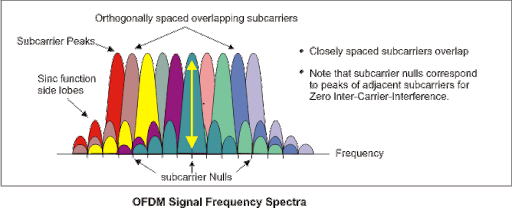
Like 4G LTE, 5G OFDM operates based on the same mobile networking principles. However, the new 5G NR air interface can further enhance OFDM to deliver a much higher degree of flexibility and scalability. This could provide more 5G access to more people and things for a variety of different use cases. 5G will bring wider bandwidths by expanding the usage of spectrum resources, from sub-3 GHz used in 4G to 100 GHz and beyond. 5G can operate in both lower bands (e.g., sub-6 GHz) as well as mm-Wave (e.g., 24 GHz and up), which will bring extreme capacity, multi-Gbps throughput, and low latency.

5G is designed to not only deliver faster, better mobile broadband services compared to 4G LTE, but can also expand into new service areas such as mission-critical communications and connecting the massive Internet of Things (IoT). This is enabled by many new 5G NR air interface design techniques, such as a new self-contained TDD sub frame design. 5G is significantly faster than 4G, has more capacity than 4G, significantly lower latency. 5G is also designed to get the most out of every bit of spectrum across a wide array of available spectrum regulatory paradigms and bands. 5G can deliver up to 20 Gigabits-per-second (Gbps) peak data rates and 100+ Megabits-per-second (Mbps) average data rates. 5G is designed to support a 100x increase in traffic capacity and network efficiency. 5G’s lower latency means near real-time access. It has been designed with an extended capacity to enable next-generation user experiences, empower new deployment models and deliver new services. With high speeds, superior reliability and negligible latency, 5G will expand the mobile ecosystem into new realms. 5G will impact every industry, making safer transportation, remote healthcare, precision agriculture, digitized logistics and more a reality.

5G to Affect Individual and Economy
5G industry forecasts $13.2 Trillion dollars of global economic output, 22.3 Million new jobs, and $2.1 Trillion dollars in GDP growth. 5G’s full economic effect will likely be realized across the globe by 2035. The development requirements of the new 5G network are also expanding beyond the traditional mobile networking players to industries such as the “driverless” automotive industry. And there are many emerging and new applications that will still be defined in the future.
For individual. 5G mobile technology can usher in new immersive experiences such as VR and AR with faster, more uniform data rates, lower latency, and lower cost-per-bit. Low-latency links like remote control of critical infrastructure, vehicles, and medical procedures will help.

What is this Company Huawei?
Huawei Technologies Co., Ltd. is a Chinese multinational technology company, headquartered in Shenzhen, Guangdong. The company was founded in 1987 by Ren Zhengfei, a former Deputy Regimental Chief in the People’s Liberation Army (PLA). The company’s initial focused on manufacturing phone switches. Huawei expanded its business to include building telecommunications networks, providing operational and consulting services and equipment to enterprises inside and outside of China, and manufacturing communications devices for the consumer market. Today it is the world’s largest vendor of telecommunications equipment. It is the second-biggest smart-phone maker globally, second only to Samsung. Huawei is also the world’s biggest maker of 5G phones, with a 36.9% market share equating to 6.9 million 5G-enabled smart-phones shipped in 2019. Huawei now employs more than 194,000 people and in December 2019 reported an annual revenue of $121.72 billion. Huawei has deployed its products and services in more than 170 countries. Huawei chairman, Erix Xu, forecast 2020 as being a “difficult year. The external environment is becoming more complicated than ever,” he said.

International Concerns About Huawei
Although successful internationally, Huawei has faced difficulties in some markets, due to claims of undue state support, links to the PLA, and cyber-security concerns, that Huawei’s infrastructure equipment may enable surveillance by the Chinese government. With the development of 5G wireless networks, there have been calls from the U.S. to prevent the use of products by Huawei or fellow Chinese telecommunications company ZTE by the U.S. and its allies. Huawei has argued that its products posed “no greater cyber-security risk” than those of any other vendor and that there is no evidence of the U.S. espionage claims. Questions regarding Huawei’s ownership and control as well as concerns regarding the extent of state support also remain. Huawei has also been accused of assisting in the surveillance and mass detention of Uyghurs in the Xinjiang re-education camps, which have resulted in sanctions by the United States Department of State. In the midst of an ongoing trade war between China and the United States, Huawei was restricted from doing commerce with U.S. companies due to alleged previous willful violations of U.S. sanctions against Iran. On 29 June 2019, U.S. President Donald Trump reached an agreement to resume trade talks with China and announced that he would ease the aforementioned sanctions on Huawei. Huawei cut 600 jobs at its Santa Clara research center in June, and in December 2019 founder Ren Zhengfei said it was moving the center to Canada because the restrictions would block them from interacting with US employees.
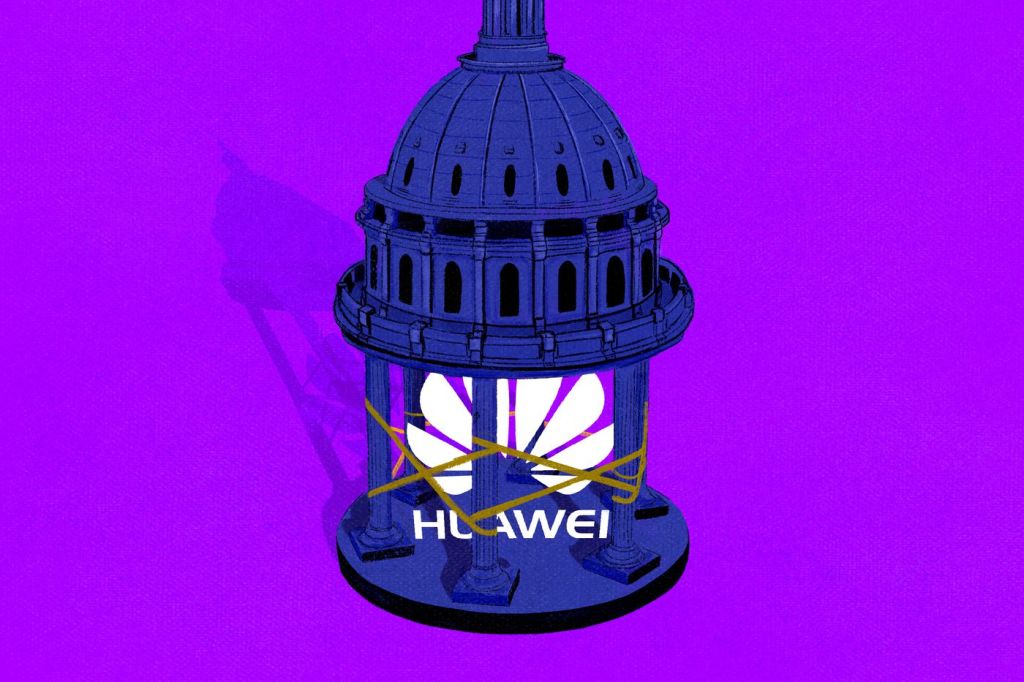
Huawei’s Complex Corporate Structure and Communist Party and PLA Links
Huawei classifies itself as a “collective” entity and prior to 2019 did not refer to itself as a private company. Richard McGregor, author of “The Party: The Secret World of China’s Communist Rulers”, says that this is “a definitional distinction that has been essential to the company’s receipt of state support at crucial points in its development”. McGregor further argues that “Huawei’s status as a genuine collective is doubtful.” Huawei’s position has shifted in 2019 when, Dr. Song Liuping, Huawei’s chief legal officer, commented on the US government ban, said: “Politicians in the US are using the strength of an entire nation to come after a private company.”

Ren Zhengfei the founder and CEO has the power to veto any decisions made by the board of directors. Huawei disclosed its list of board of directors for the first time in 2010. Liang Hua is the current chair of the board. As of 2019, there were many board members, among them, Meng Wanzhou (CFO and deputy chairwoman, is currently out on bail in Vancouver, after being arrested there on December 1, 2018, after an extradition request of US authorities on suspicion of Iran sanctions evasion. Huawei’s Chief Ethics & Compliance Officer is Zhou Daiqi who is also Huawei’s Communist Party Committee Secretary.

Huawei claims it is an employee-owned company, but it remains a point of dispute. Ren Zhengfei retains approximately 1 percent of the shares of Huawei’s holding company, Huawei Investment & Holding, with the remainder of the shares held by a trade union “committee”, not the trade union per se. The internal governance procedures of this committee, its members, its leaders or how they are selected all remain undisclosed to the public that is claimed to be representative of Huawei’s employee shareholders. The company’s trade union committee is registered with and pay dues to the Shenzhen federation of the All-China Federation of Trade Unions, which is controlled by the Communist Party of China. There is a limitation in Chinese law preventing limited liability companies from having more than 50 shareholders. About half of Huawei staff participate in this scheme (foreign employees are not eligible), and hold what the company calls “virtual restricted shares”. These shares are non-tradable and are allocated to reward performance. When employees leave Huawei, their shares revert to the company, which compensates them for their holding. Although employee shareholders receive dividends, their shares do not entitle them to any direct influence in management decisions, but enables them to vote for members of the 115-person Representatives’ Commission from a pre-selected list of candidates. The Representatives’ Commission selects Huawei Holding’s Board of Directors and Board of Supervisors. Employees do not own a part of Huawei through their “shares”. For all purposes Huawei may be deemed effectively state-owned. Ren Zhengfei was a former PLA member and that Huawei functions as an arm of the Chinese government.

ZTE Corporation
ZTE Corporation formerly Zhongxing Telecommunication Equipment Corporation) is a global leader in telecommunications and information technology. Founded in 1985, ZTE is listed on both the Hong Kong and Shenzhen Stock Exchanges. ZTE operates carrier networks (54%), terminals (29%) and telecommunication (17%). Their core products being wireless, exchange, access, optical transmission, and data telecommunications gear; mobile phones; and telecommunications software. It also offers products that provide value-added services, such as video on demand and streaming media. ZTE primarily sold products under its own name, but it is also an OEM. ZTE is one of the top five largest smart-phone manufacturers in its home market. As with Huawei, the company has faced criticism in the United States over potential ties to the Chinese government that could enable surveillance. In 2017, ZTE was fined for illegally exporting U.S. technology to Iran and North Korea in violations of economic sanctions. In April 2018, after the company failed to properly reprimand the employees involved, the U.S. Department of Commerce banned U.S. companies (semiconductors) from exporting to ZTE for seven years. The ban was lifted in July 2018 after ZTE replaced its senior management, and agreed to pay additional fines and establish an internal compliance team for 10 years. In June 2020, the Federal Communications Commission designated ZTE a national security threat, thereby barring it from any U.S. subsidies.
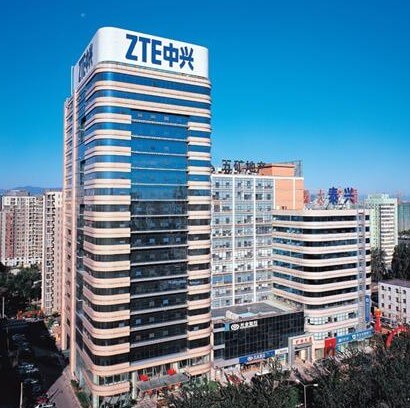
Huawei Security Risks and Criticism
Huawei has faced criticism for various aspects of its operations, with its most prominent controversies having involved U.S. allegations of its products containing backdoors for Chinese government espionage, consistent with domestic laws requiring Chinese citizens and companies to cooperate with state intelligence when warranted. Huawei executives have consistently denied these allegations, having stated that the company has never received any requests by the Chinese government.
Huawei has been at the center of espionage allegations over Chinese 5G network equipment. In 2018, the United States passed a defense funding bill that contained a passage barring the federal government from doing business with Huawei, ZTE, and several Chinese vendors of surveillance products, due to security concerns. The Chinese government has threatened economic retaliation against countries that block Huawei’s market access. German and British intelligence agencies have pushed back against the US’ allegations, stating that after examining Huawei’s 5G hardware and accompanying source code, they have found no evidence of malevolence and that a ban would therefore be unwarranted. Additionally, the head of Britain’s National Cyber Security Centre (the information security arm of GCHQ) stated that the US has not managed to provide the UK with any proof of its allegations against Huawei. The truth is somewhat blurry, as are the distinctions between core and non-core technological elements when it comes to 5G infrastructure. On 28 January 2019, U.S. federal prosecutors formally indicted Meng and Huawei with 13 counts of bank and wire fraud (in order to mask the sale that is illegal under sanctions of U.S. technology to Iran), obstruction of justice, and misappropriating trade secrets. The Department also filed a formal extradition request for Meng with Canadian authorities that same day. The case for extradition of Meng to the US to face charges is ongoing as of May, 2020 with the B.C. Supreme Court judge on May 27, 2020 ruling that extradition proceedings against the Huawei executive should proceed, denying the claim of double criminality brought by Meng’s defense team.

In August 2018, the National Defense Authorization Act for Fiscal Year 2019 (NDAA 2019) was signed into law, containing a provision that banned Huawei and ZTE equipment from being used by the U.S. federal government, citing security concerns. Huawei filed a lawsuit over the act in March 2019, alleging it to be unconstitutional because it specifically targeted Huawei without granting it a chance to provide a rebuttal or due process. The executive order signed by President Trump in May 2019, that gave the federal government the power to block U.S. companies from doing business with suppliers that could pose a threat to national security? New Chinese handsets would no longer be able to use Google apps such as Gmail, Chrome, or YouTube. Huawei is reported to have replacements for Google apps and critical underlying services. U.S. companies have been restricted through an act from doing business with Huawei without a government license. Various U.S.-based companies immediately froze their business with Huawei to comply with the regulation. These actions have negatively affected Huawei production, sales and financial projections. However, on 29 June 2019 at the G20 summit, the US President made statements implicating plans to ease the restrictions on U.S. companies doing business with Huawei. Huawei continues to be treated as a national security threat, thereby barring it from any U.S. subsidies.
Huawei Exploitable Backdoors and Intellectual Property Theft
In February 2020, US government officials claimed that Huawei has had the ability to covertly exploit backdoors intended for law enforcement officials in carrier equipment like antennas and routers since 2009. Huawei has also been accused of various instances of intellectual property theft with parties such as Nortel, Cisco Systems, and T-Mobile US (where a Huawei employee had photographed a robotic arm used to stress-test smart-phones and taken a fingertip from the robot). The management of the company claims the US government persecutes it because Huawei’s expansion can affect American business interests. In February 2020, the United States Department of Justice charged Huawei with racketeering and conspiring to steal trade secrets from six U.S. firms.
Involvement in Xinjiang re-education camps
In 2019, the Australian Strategic Policy Institute accused Huawei of assisting in the mass detention of Uyghurs in Xinjiang re-education camps. Huawei technology is regarded as critical to the Chinese government’s pervasive system of surveillance of Uyghurs and other ethnic minority groups, it is alleged.

Chinese Government Approach
The Chinese government uses unconventional levers of influence which are disguised and hidden. Hence, they are often denied, neglected or unappreciated by us. Chinese three-warfare strategy uses innocuous communication devices as surveillance platforms. It tracks and suppresses political opponents while spinning positive coverage and information regarding weak and corrupt governments specially in BRI countries. Of course, the China story is also glorified. Chinese infrastructure, communications and surveillance systems cause over dependence on China, which becomes indispensable and expensive to replace. Chinese communication devices and software are part of a surveillance and intelligence collection system for data manipulation and opinion molding to cause inalienable economic and political dependence. China has been constantly undermining sovereignty and surreptitiously affecting lifestyles of others. Hence it is important to understand what 5G is about and then take it forward from there.

Way Ahead India
What is happening about Huawei and Chinese electronic surveillance and data theft is part of the Multi Domain War which is being waged by China. Watching the world show concern about theChinese telecom equipment, and possible security risk, and sensing the national public mood after the military show-down in Galwan, Indian government decided ban nearly 59 mobile Apps. The last word on Chinese telecom equipment is still to be said. The Chinese cyber attacks, and stealing of sensitive information at total disregard to intellectual property rights is well known. A lot of Commercial of the Shelf (COTS) electronics sold in India are made in China. Indian companies are also buying many network related systems. Undoubtedly 5G telecommunications networks are a critical infrastructure. Ideally India should make its own. If imported, the question is whether the risks of espionage or sabotage are unacceptably high.

Another way of looking at things is that no major Chinese company is independent of the Chinese government and Communist Party. But, unlike telecom, most other items have minimal impact on national security. Worst part of telecommunications systems, is that those systems are specifically designed to be wiretapped, so a little bit of sabotage in the specific wiretap-enabling routines and it would be very, very hard to detect. A single microscopic difference, the addition of a small sabotage chip can make the difference. This is not about finding “backdoors” in current Chinese telecom products. Software reviews of existing products are not sufficient to preclude the possibility of a vendor pushing a malicious update that enables surveillance in the future. No matter what equipment India uses for 5G, there will be certain amount of security risks. With such a higher amount of data, there will higher risk. India ought to seriously consider building an overlay secure virtual network across the 5G infrastructure that could provide end-to-end security, controlled and managed by the 5G network operators. China is all set to disrupt normal and military communication. 5G caters for large data transfers which take place when multiple and complex systems operate.
Communications are the lifeblood of armed forces in the battlefield. From a military perspective, 5G will promote Digitalization of Defence. The multiplicative effect of 5G communications on robotics, cyber war, militarization of space, unmanned systems, surveillance, info, control, and data networks for net centric warfare is immense.
It is not clear that Chinese government undermines foreign competition by stealing trade secrets and intellectual property, and through artificially low prices backed by the government. The Communist Chinese government controls everything. It remains very difficult to audit that a chip with millions of embedded transistors or software with millions of lines of code does only what consumers know and consent to it doing. Huawei has such ties to the PLA appears to be a threat. India must be vigilant in preventing Chinese state-directed telecoms companies, like Huawei and ZTE, from undermining and endangering Indian 5G networks. Future, cutting-edge industries and the IoT will depend on this critical technology, and any action that threatens our 21st-century industries from developing and deploying 5G undoubtedly undermines both our national and economic security.
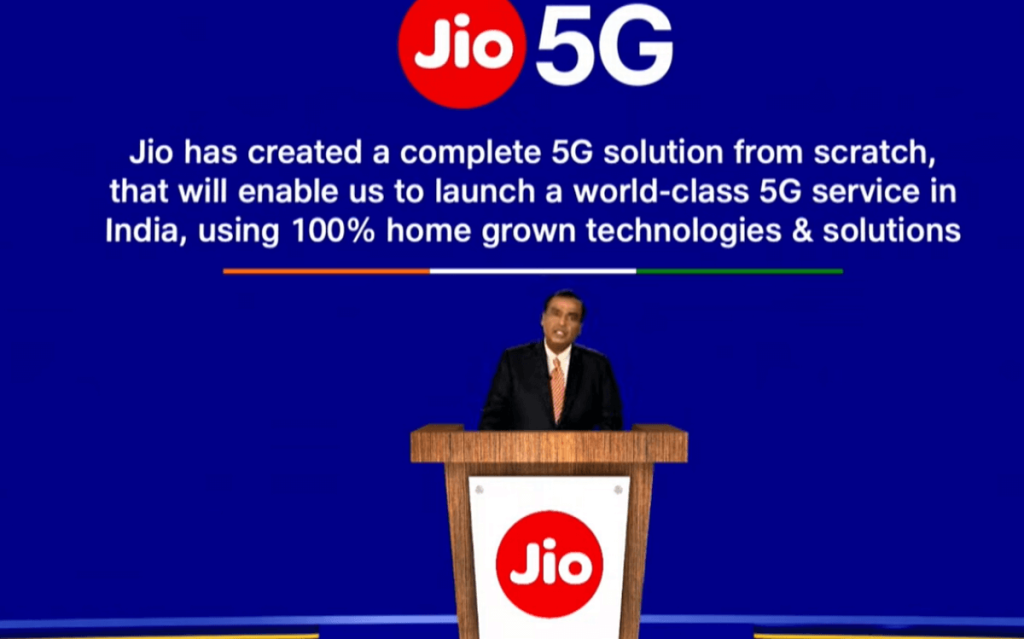
The first step would be to start making some of these in India, even if it is a little costly. Mukash Ambani, CMD, Reliance Industries Ltd has just announced that “Jio” would soon be rolling out an entirely indigenous 5G network. The second action is to built own encryption. If sensitive data moving across any 5G network infrastructure is adequately encrypted, as it surely will be, then the question of hostile state interception and snooping becomes moot. More than the Huawei kit, question is about Chinese Government (Intelligence agencies and PLA) role and linkages. Can anyone trust China when it comes to state surveillance and broader cyber-warfare capabilities. Galwan has been a wakeup call. India must get its 5G act right, and military must beware of anything that is made in China.
Lead Image Credit: preview-www.dwnews.com

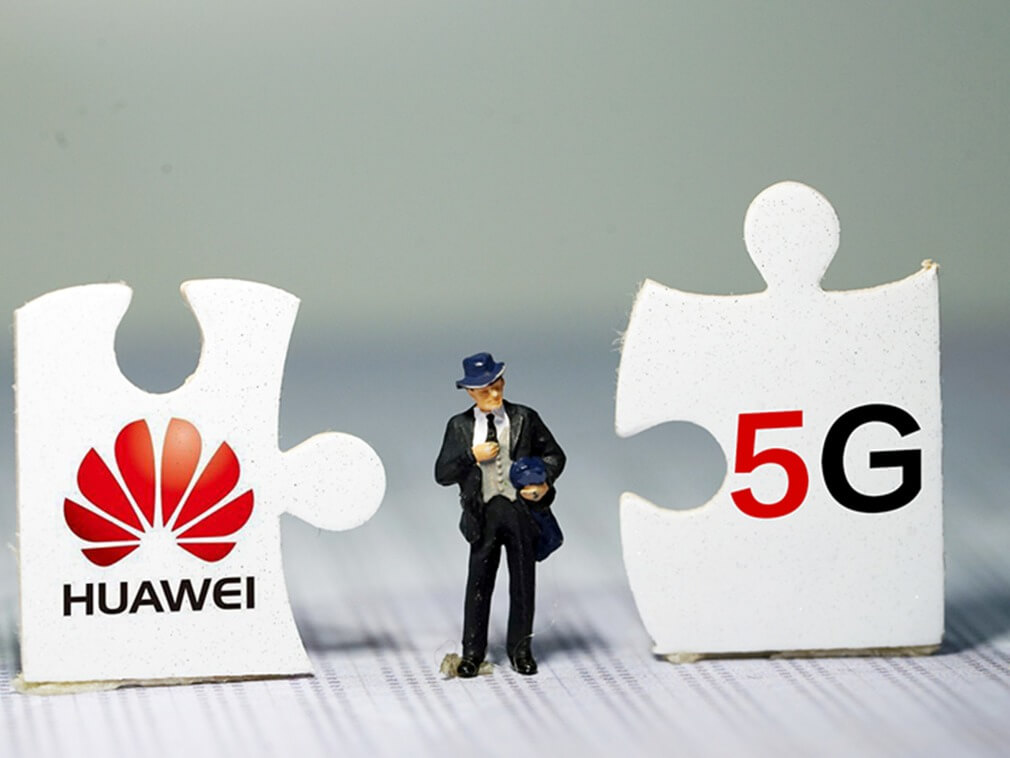
In India, unless and until the GOI gets spectrum from the Armed Forces under
the MOD, mobile telephony and internet services can’t come into being, be it 2G in the past or 5G for which trials will now be held. How are India’s Armed Forces able to create spectrum?
LikeLike
Fair enough. That is for nation to see and analyse and decide. Armed Forces have released spectrum in the past
LikeLike
My question was how do the Armed Forces create spectrum?
LikeLike
They don’t create. They were alotted for their security systems related use. They have to release
LikeLike
Where does the GOI gets this spectrum which is alloted to the Armed Forces?
LikeLike
No matter who owns any company in China, the Communist Party of China (CPC) always has some holding in that company. That toe hold enables the CPC to ensure that they have access to all the goings-on of that company. hence the fear that the CPC will have access to information on all the Huawei customers. Therein lies the problem.
LikeLike
Absolutely. Very well said. Considering past Chinese record of Cyber attacks and espionage, the world has a lot to worry.
LikeLike